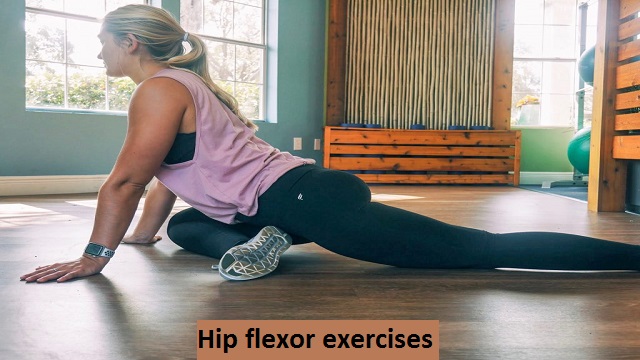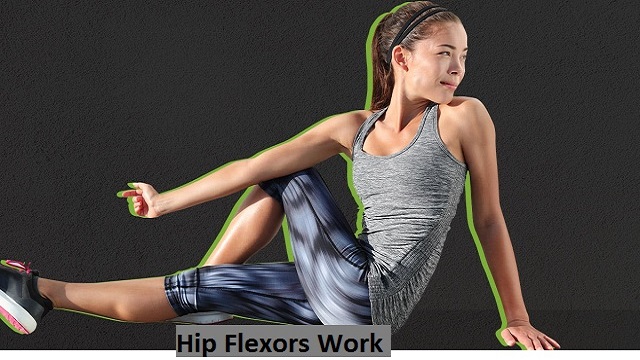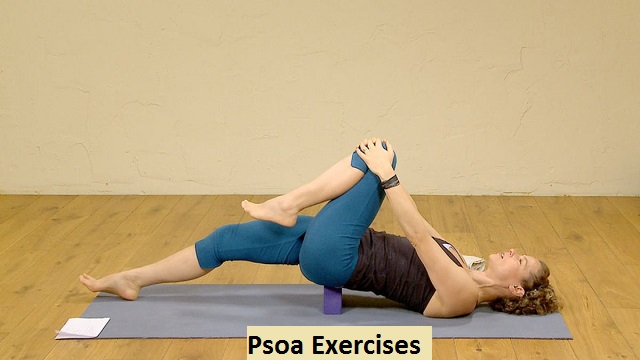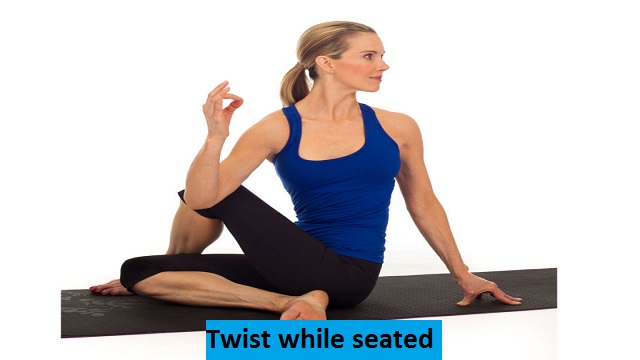
Hip flexor exercises to help loosen and strengthen tight hips.
Your hip flexors, a frequently disregarded but excessively used muscle group, are crucial to your effectiveness in both strength training and endurance training.
Greater focus on supporting muscles, like your hip flexors, can have a significant impact on your training. In this section, we’ll go into more detail about hip flexors, how to strengthen them, and the benefits they can have on your ability to perform exercises.
What exactly are hip flexors?
Actually, your hip flexors are a collection of muscles that attach your quadriceps to your hip bones. This muscle group is crucial for actions like lifting your knees or bending at the waist.
Some of the hip flexor muscles are:
- Iliacus and psoas, two powerful muscles that extend from the inside of the pelvis to the spine, are also referred to as the iliopsoas.
- Your lower back is stabilized by these muscles.
- Your knee and leg are flexed by the sartorius muscle, which runs from the spine to the kneecap.
- The side of the hip is home to the tensor fasciae latae.
- Your quadriceps’ Rectus femoris, a muscle that runs from the spine to the kneecap, is also a part of this muscle group.
- You use this quad muscle when you squat and lunge.
Do you have tight hip flexors? How can you tell?
In addition to experiencing tightness in your hip region, other common symptoms to watch for are:
- tightness or pain in your neck, glutes, or lower back.
- Inability to stand up straight or poor posture.
- thighs or hip muscles spasming.
- mobility issues or discomfort during exercise.
Why do your hip flexors need to be stretched?
Not only when you’re sitting down, but also when you’re walking, running, and jumping, your hips support the weight of your body all day.
Daily stretching can increase your mobility and help you avoid pain or injury. Below, you can find a few hip flexor stretches to try. Performing strength exercises that target your glutes and core is equally as important as stretching for the other muscles surrounding the hip.
Make sure to seek medical advice if you have a sharp pain from a torn or strained hip flexor that doesn’t go away.
How Do Hip Flexors Work?
A small group of muscles known as the hip flexors, which attach from the anterior or front of the pelvis to the femur, are in charge of maintaining proper pelvic alignment and flexing the hip. When performing strength training exercises like the squat or deadlift, the hip flexors are required for complete hip extension.
Every fundamental human movement and each functional movement of your lower body require the hip flexors.
Being sedentary all day can result in weak hip muscles and tight hip flexors, which can cause muscle imbalances and injury.
Your functional strength training will benefit from strengthening and stretching your hip flexors, and it will also enhance your overall quality of life. You wouldn’t believe it, but the cause of your hip flexor pain could actually originate in your Achilles, hamstrings, knees, or even iliotibial band.

Hip-flexor muscles:
The iliacus, pectineus, rectus femoris, psoas, and sartorius are the five main muscles that make up the hip flexors and are responsible for hip flexion. The psoas major and minor are two long, thick muscles that have a spindle- or tapering-shaped origin at the side of the spine and an insert at the femur.
Flexing the hip activates the psoas muscle. The sheath known as the iliacus, which connects the ilium bone to the lesser trochanter, has a triangular shape.
A hip flexor injury.
Hip flexor tightness can be exacerbated by sitting or other sedentary activities. People who sit at their jobs for extended periods of time frequently experience this problem.
Hip pain can also result from overuse and overtraining in athletes. Because of their tight hip flexors and hunched posture, runners frequently experience pain in their knees, hips, and iliotibial band.
Hip flexor exercises include the following.
We’ve provided a list of some of the top hip flexor exercises to help you build hip strength and improve mobility.
Do a reverse lunge and a high knee lift.
- Standing, take a step back with your right foot and look straight ahead.
- Keep your trunk upright throughout the entire movement.
- Transferring your weight to your right leg, bend your extended knee. Lunge slowly and steadily until your left knee is either just touching the floor or hovering there. Directly above your right ankle, your right knee should be.
- Return to standing and move past the original starting point, bending your knee to a 90-degree angle. After a set of ten to twelve, pause, then repeat with your left leg in front.

March, Psoa
- Lay backwards with your spine in neutral alignment and your knees bent at a right angle.
- Your feet should be covered in a tension band that you keep taut throughout the exercise.
- Repeat on the opposite side after slowly bringing one extended leg back.
- Complete 1-3 sets of 8–12 repetitions.
Split Squat in Bulgaria:
A single-leg squat variation is the Bulgarian split squat. In contrast to a conventional barbell squat, it transfers all the weight and pressure from your lower back to your legs. In order to increase muscle hypertrophy and strength gains in your glutes and quadriceps, the stabilizing leg of the Bulgarian split-squat is elevated behind you.
Bulgarian split squats are crucial for developing your quadriceps, glutes, and midline stability in addition to helping you develop a bigger barbell back squat. Additionally, they greatly increase the range of motion in your hip flexors.
- Initially, place your feet hip-width apart. using a bench or box that is just below knee height, with the right foot and left foot behind the body.
- Start to lower yourself into a lunging position while keeping your shoulders stacked directly above your forward-facing hips.
- Holding a dumbbell or kettlebell vertically and hanging on either side of your body with both hands.
- Lower your left knee toward the floor while maintaining a straight back.
- The front knee should not protrude out in front of your toes as you descend as low as you safely can while maintaining an open chest.
- Push the top of your left foot into the box to stand back up and pull back on your right knee as soon as your left knee starts to droop.
Get your legs up.
Raise your legs.
- Legs straightened, place your arms by your sides, and lie down.
- At a 90-degree angle, flex your right knee. Put your right foot on the floor.
- The left leg should be raised to a 45-degree angle while remaining straight by contracting the quadriceps in the left leg and inhaling.
- 3 to 5 seconds of holding.
- Inhale out as you gradually lower your left leg back to where you were.
- Before switching legs, repeat ten times.

Mountain Climbers:
One of the best ab exercises is the mountain climber. Mountain climbers, which are performed while holding a plank position, are essentially planks combined with a cardio component. Weight loss, increased body fat burning, increased strength, and improved core stabilization are all benefits of mountain climbing.
- Engage your core, glutes, and quads while starting in a push-up or high plank position.
- Drive your right knee in toward your chest outside the arm while simultaneously driving your left knee in toward your chest outside the arm.
- Alternate legs as you quickly jump or step back.
- For thirty seconds, keep switching.
- Focus on engaging your core and keeping your shoulders in line with your wrists.
- Five to six sets of this motion lasting 30 seconds each should be performed.
Using a bench for the hip flexor and quad:
The intensity can be raised and this stretch can be advanced by using a bench. Use a low table or step if you don’t have a bench.
- Behind you, position a bench horizontally.
- The top of your right foot should be resting on or up against the bench as you kneel on a yoga mat to start.
- Make sure your left knee is not further forward than your toes by taking a big step forward with your left leg to get into a low-lunge position.
- Push your hips forward while maintaining your upright posture so that the front of your right leg feels stretched.
- Hold this posture for 30 seconds while inhaling deeply.
- Repeat on the opposite side.
Glutes:
It’s crucial to stretch your glutes for optimal hip mobility because they cooperate with your hip flexors to move your hips and most of your lower body.
- On a yoga mat, begin by lying flat on your back. Making sure your feet are hip-width apart and your spine is in a neutral position, bend your knees and place your feet firmly on the mat.
- Just above the knee, lift your right foot and place your left leg on top of it.
- With both hands on the left back of your thigh, bring your left knee in toward your torso.
- Breathe deeply while maintaining this posture for 30 seconds.
- When you exhale, try drawing your right knee closer to your chest to get a deeper stretch. Alternatively, try pressing your right elbow into your right knee.
- Your tailbone should be on the ground, and your spine should remain in a neutral position.
- On the opposite side, repeat.

Twist while seated:
The gluteus maximus, the largest gluteal muscle, is the focus of this seated glute stretch.
- Start out seated on a yoga mat with your feet flexed and your legs out in front of you. To place your foot on the mat on the outside of your right knee, lift your left leg.
- As you pull your left knee in toward your chest, encircle it with your right arm, place it behind your hip on the mat, and place your left hand there.
- Hold this posture for 30 seconds while inhaling deeply.
- Continue on the opposite side.
Adductors:
It’s also known as the “butterfly stretch.”. This type of stretch should always be done after working out but is often neglected, especially by beginners.
- Start by sitting down on a yoga mat with your legs out in front of you.
- You should be in a position that is similar to sitting cross-legged by bringing the soles of your feet together in front of you, with your knees bent.
- Put your hands on your feet and rest your forearms on your thighs.
- Hold this posture for 30 seconds while taking deep breaths.
- Additionally, you can lengthen the muscle by gently pressing your thighs into the mat with your forearms while lowering your torso towards the floor each time you exhale.
Outside of the leg, the thigh muscles are called tensor fasciae latae.
To work on this hip flexor, you will require a foam roller.
Myofascial release can be performed on your own body by foam rolling. Muscle and fascial tightness are massaged or released as a result.
Pressure from the roller works to loosen up “knots” that can develop in your muscles and connective tissue. To foam roll your tensor fasciae latae (the side of your hip), follow these steps:
- Place the foam roller on your mat in front of your knees while knelt down.
- Place your hands on the ground in front of the foam roller, rotate your torso to the right, and extend your legs as shown to allow the foam roller to press into your left TFL (just below your hip).
- Roll the foam roller slowly along the TFL’s length. When you come to a tender spot (also known as a trigger point), stop and hold the position for about 60 seconds, or until the pressure or pain is greatly diminished.
- If you prefer, you can use a gentler rocking motion over the tender spot.
- Roll down the full length of your TFL, stopping if necessary at any trigger points.
- On the opposite side, repeat.
Stretch your glutes while standing.
Use this standing glute stretch at the end of your workout if you’ve been working out outside or don’t want to sit on the ground.
- Place your feet shoulder-width apart while standing.
- As shown, raise your left foot, extend your left knee, and place your ankle just above your right knee.
- You should be in a single-leg squat when you bend your right knee.
- Use your left elbow to gently press down on your left knee for an added stretch.
- Maintain this posture for 30 seconds.
- Try to concentrate on a point directly in front of you if you are having trouble balancing.
- On the other side, repeat this stretch.
Read More: Dumbbell Chest Exercises
Leave a Reply